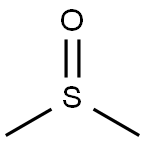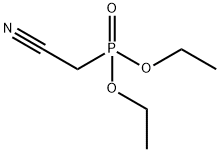Dimethyl dicarbonate
Synonym(s):Dimethyl dicarbonate;Dimethyl pyrocarbonate, Pyrocarbonic acid dimethyl ester
- CAS NO.:4525-33-1
- Empirical Formula: C4H6O5
- Molecular Weight: 134.09
- MDL number: MFCD00008419
- EINECS: 224-859-8
- SAFETY DATA SHEET (SDS)
- Update Date: 2024-12-18 14:15:30

What is Dimethyl dicarbonate?
Chemical properties
Dimethyl dicarbonate (DMDC) is a colourless liquid with a slightly pungent aroma. It is primarily used as a beverage preservative, processing aid, or sterilant (Enumber 242). The application of DMDC is particularly useful when wine needs to be sterilized but cannot be sterile filtered, pasteurized, or sulfured. DMDC is also used to stabilize non-alcoholic beverages such as carbonated or non-carbonated juice beverages, isotonic sports beverages, iced teas, and flavored waters.
The Uses of Dimethyl dicarbonate
Dimethyl Dicarbonate(DMDC) is a microbial control agent used in wine; ready-to-drink teas; nonjuice-containing beverages; carbonated,dilute beverages containing juice, fruit flavor or both with the juice content not exceeding 50%.
Dimethyl Dicarbonate has been commonly used as a antimicrobial agent for a broad spectrum of microorganisms. The primary target microorganisms of DMDC are yeasts, including Saccharomyces, Zygosaccharomyces, Rhodotorula, Candida, Pichia, Torulopsis, Torula, Endomyces, Kloeckera and Hansenula. DMDC is also bactericidal to a number of species including Acetobacter pasteurianus, Escherichia coli, Pseudomonas aeruginosa, Staphylococcus aureus, several Lactobacillus species and Pediococcus cerevisiae DMDC has also been shown to be bactericidal against Escherichia coli O157:H7.
The antimicrobial effect of DMDC results from the deactivation of microbial enzymes, mainly through reaction with protein imidazole and amine groups, leading to the destruction of the microorganisms. The remaining unreacted DMDC breaks down rapidly into methanol and carbon dioxide. The DMDC activity is based on the hydrolysis rate. Hydrolysis occurs when DMDC reacts with water and the rate is dependent on the temperature of the beverage or wine. It takes about four hours at 10°C (50°F) or two hours at 20°C (68°F) for DMDC completely breaking down.
What are the applications of Application
Dimethyl dicarbonate is a histidine methylator
Definition
ChEBI: Velcorin is an organooxygen compound. It is functionally related to a carbonic acid.
Purification Methods
Dissolve it in Et2O, shake this with a small volume of 0.1N HCl, dry Et2O with Na2SO4 and distil in in vacuo below 100o to give a clear liquid. It decomposes to CO2 and dimethyl carbonate on heating at 123-149o. It is readily hydrolysed by H2O and is a yeast inhibitor and an IRRITANT. [Brysov et al. J Org Chem USSR 10 2551 1974, Boehm & Mehta Chem Ber 71 1797 1938, Beilstein 3 IV 17.]
Properties of Dimethyl dicarbonate
| Melting point: | 15-17°C |
| Boiling point: | 45-46 °C5 mm Hg(lit.) |
| Density | 1.25 g/mL at 25 °C(lit.) |
| vapor pressure | 0.7 hPa (20 °C) |
| refractive index | n |
| Flash point: | 80 °C |
| storage temp. | Store below +30°C. |
| solubility | 35g/l (decomposition) |
| form | Oil |
| color | Colourless |
| explosive limit | 3-29.9%(V) |
| BRN | 956715 |
| Stability: | Moisture Sensitive |
| EPA Substance Registry System | Dicarbonic acid, dimethyl ester (4525-33-1) |
Safety information for Dimethyl dicarbonate
| Signal word | Danger |
| Pictogram(s) |
 Corrosion Corrosives GHS05  Skull and Crossbones Acute Toxicity GHS06 |
| GHS Hazard Statements |
H302:Acute toxicity,oral H314:Skin corrosion/irritation H330:Acute toxicity,inhalation |
| Precautionary Statement Codes |
P260:Do not breathe dust/fume/gas/mist/vapours/spray. P280:Wear protective gloves/protective clothing/eye protection/face protection. P301+P312:IF SWALLOWED: call a POISON CENTER or doctor/physician IF you feel unwell. P303+P361+P353:IF ON SKIN (or hair): Remove/Take off Immediately all contaminated clothing. Rinse SKIN with water/shower. P305+P351+P338:IF IN EYES: Rinse cautiously with water for several minutes. Remove contact lenses, if present and easy to do. Continuerinsing. |
Computed Descriptors for Dimethyl dicarbonate
New Products
(S)-3-Aminobutanenitrile hydrochloride 4-Methylphenylacetic acid N-Boc-D-alaninol N-BOC-D/L-ALANINOL Tert-butyl bis(2-chloroethyl)carbamate 3-Morpholino-1-(4-nitrophenyl)-5,6-dihydropyridin- 2(1H)-one Furan-2,5-Dicarboxylic Acid Tropic acid 1-Bromo-3,5-Di-Tert-Butylbenzene S-2-CHLORO PROPIONIC ACID ETHYL ISOCYANOACETATE 2-Bromo-1,3-Bis(Dimethylamino)Trimethinium Hexafluorophosphate 4-IODO BENZOIC ACID 3-NITRO-2-METHYL ANILINE 1-(2,4-DICHLOROPHENYL) ETHANAMINE (2-Hydroxyphenyl)acetonitrile 4-Bromopyrazole 2-(Cyanocyclohexyl)acetic acid 4-methoxy-3,5-dinitropyridine 1-(4-(aminomethyl)benzyl)urea hydrochloride 2-aminopropyl benzoate hydrochloride diethyl 2-(2-((tertbutoxycarbonyl)amino) ethyl)malonate tert-butyl 4- (ureidomethyl)benzylcarbamate Ethyl-2-chloro((4-methoxyphenyl)hydrazono)acetateRelated products of tetrahydrofuran






![DIETHYL PYROCARBONATE, [CARBONYL-14C]](https://img.chemicalbook.in/StructureFile/ChemBookStructure1/GIF/CB0209137.gif)

You may like
-
 Dimethyl dicarbonate CAS 4525-33-1View Details
Dimethyl dicarbonate CAS 4525-33-1View Details
4525-33-1 -
 2033-24-1 98%View Details
2033-24-1 98%View Details
2033-24-1 -
 1975-50-4 98%View Details
1975-50-4 98%View Details
1975-50-4 -
 2-HYDROXY BENZYL ALCOHOL 98%View Details
2-HYDROXY BENZYL ALCOHOL 98%View Details
90-01-7 -
 2-Chloro-1,3-Bis(Dimethylamino)Trimethinium Hexafluorophosphate 221615-75-4 98%View Details
2-Chloro-1,3-Bis(Dimethylamino)Trimethinium Hexafluorophosphate 221615-75-4 98%View Details
221615-75-4 -
 61397-56-6 CIS BROMO BENZOATE 98%View Details
61397-56-6 CIS BROMO BENZOATE 98%View Details
61397-56-6 -
 14714-50-2 (2-Hydroxyphenyl)acetonitrile 98+View Details
14714-50-2 (2-Hydroxyphenyl)acetonitrile 98+View Details
14714-50-2 -
 118753-70-1 98+View Details
118753-70-1 98+View Details
118753-70-1